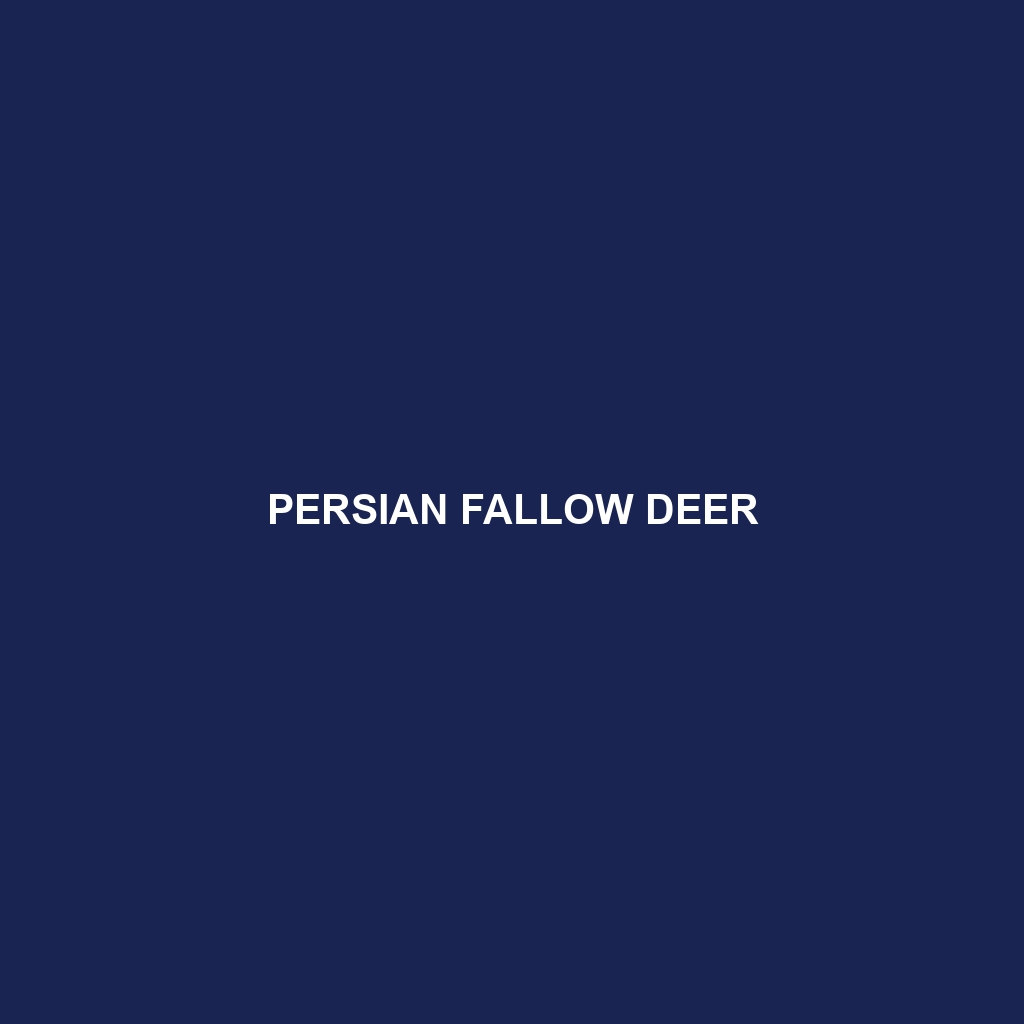Persian Fallow Deer ( Dama mesopotamica )
Common Name: Persian Fallow Deer
Scientific Name: Dama mesopotamica
Habitat
The Persian Fallow Deer is primarily found in the lush, forested areas and river valleys of western Asia, particularly in regions of Iran and the surrounding territories. This species prefers environments that combine open woodlands and shrublands, where they can find adequate shelter and food sources. Historically, their range extended across much of the Middle East, but today their distribution is significantly reduced, making their habitat critical for their survival.
Physical Characteristics
Persian Fallow Deer are known for their striking appearance. Males typically weigh between 80 to 120 pounds and stand about 36 inches at the shoulder. Females are generally smaller, weighing around 60 to 100 pounds. Their coats are usually a rich chestnut color with distinctive white spots, with males showcasing impressive, lyre-shaped antlers that can grow up to 35 inches long. Their unique coloration and structures make them a visually captivating species.
Behavior
These deer are crepuscular, meaning they are most active during dawn and dusk. They are social animals and are often seen in small, loose herds that consist of females and their young, while males tend to be more solitary outside of mating season. Persian Fallow Deer are known for their graceful movements and swift agility, which they use to escape predators. Their communication includes a variety of vocalizations as well as body language signals.
Diet
Persian Fallow Deer are herbivorous and primarily feed on a variety of plants, including leaves, fruits, and grasses. They are particularly fond of tender shoots and forbs, which provide them with the necessary nutrients. Their feeding habits are vital for maintaining the health of their habitat, as they help control the growth of vegetation and promote biodiversity.
Reproduction
The breeding season for Persian Fallow Deer typically occurs in the late autumn. Males will engage in competitive behaviors to attract females, such as vocalizations and displays of their antlers. After a gestation period of about seven months, females give birth to one or two fawns, which are hidden away in dense cover for the first few weeks to protect them from predators.
Conservation Status
The Persian Fallow Deer is currently classified as ‘Endangered’ by the International Union for Conservation of Nature (IUCN). Habitat loss, hunting, and competition with livestock have severely reduced their populations. Conservation efforts are underway to protect and restore their natural habitats, emphasizing the importance of this species in the ecosystem.
Interesting Facts
One fascinating fact about the Persian Fallow Deer is their ability to thrive in arid climates, which is a testament to their adaptability. Additionally, this deer species has a unique vocalization that resembles a high-pitched “barking” sound, setting them apart from other deer species.
Role in Ecosystem
Persian Fallow Deer play a significant role in their ecosystem. They act as herbivores, aiding in seed dispersal and helping to shape the vegetation of their habitats. Their grazing habits can influence plant community dynamics, which in turn supports a variety of other wildlife. By maintaining healthy ecosystems, Persian Fallow Deer contribute to the overall biodiversity and ecological balance of their environment.
